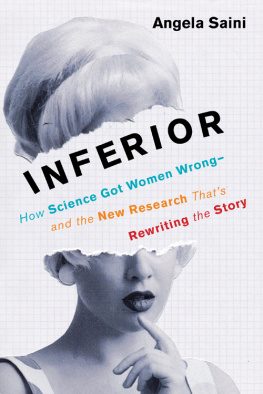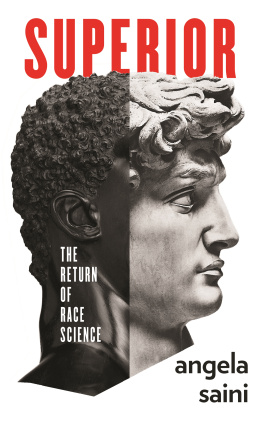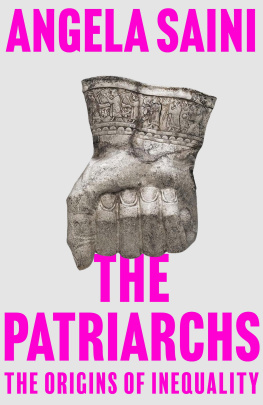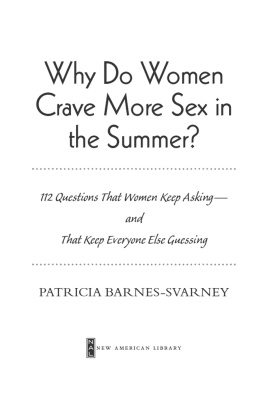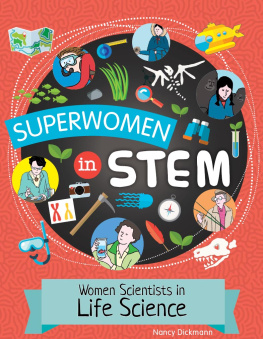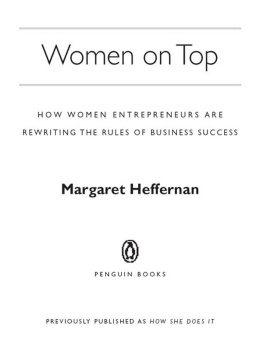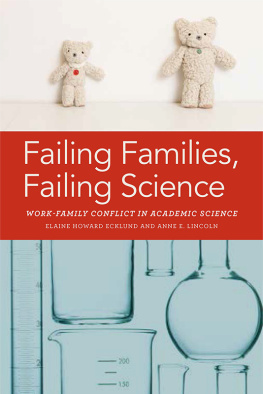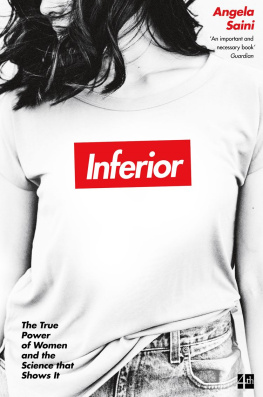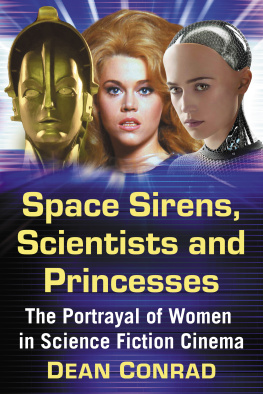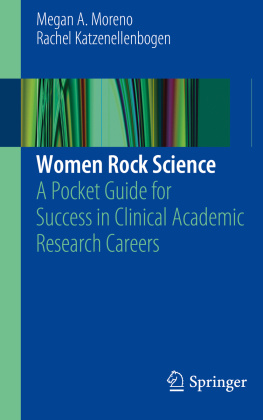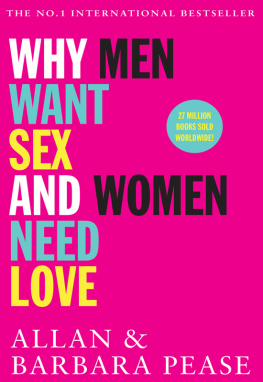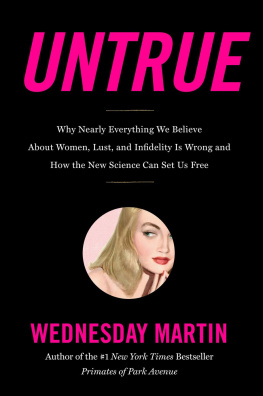
For my boys,
Mukul and Aneurin
INTRODUCTION
For centuries, scientists have influenced decision makers on important issues including abortion rights, granting women the vote, and how schools educate us. They have shaped how we think about our minds and bodies and our relationships with each other. And of course, we trust scientists to give us the objective facts. We believe that what science offers us is a story free from prejudice. It is the story of us, starting from the very dawn of evolution.
Yet when it comes to women, so much of this story is wrong.

I was watching a homemade rocket zoom high into the sky. It was a sunny Saturday afternoon and I must have been about sixteen years old, on the playing field of my school in southeast London. Fresh from the nerdy triumph of having been elected chair of the schools first science society, Id organized a day building small model rockets before shooting them into the air. I couldnt think of anything better. The night before, I desperately calculated whether we even had enough construction materials for the crowds that were sure to come.
I shouldnt have worried. On the day, I was the only one who turned up. My chemistry teacher Mr. Easterbrook, a kind man, stayed and helped anyway.
If you were the geek growing up, youll recognize how lonely it can be. If you were the female geek, youll know its far lonelier. By the time I reached my final years of school, I was the only girl in my chemistry class of eight students. I was the only girl in my mathematics class of about a dozen. And when I decided to study engineering at university, I found myself the only woman in a class of nine.
Things havent changed much since then. Statistics collected by the Womens Engineering Society in 2016 show that only 9 percent of the engineering workforce in the United Kingdom is female and just over 15 percent of engineering undergraduates are women. Figures from WISE, a campaign in the United Kingdom to promote women in science, engineering, and technology, reveal that in 2015 women made up a little more than 14 percent of their workplaces overall. The picture is similar in the United States: according to the National Science Foundation, although women make up nearly half the scientific workforce, theyre underrepresented in engineering, physics, and mathematics.
Standing on that playing field by myself at age sixteen, I couldnt figure it out. I belonged to a household of three sisters, all brilliant at math. Girls stood among boys as the highest achievers at my school. According to the Womens Engineering Society, theres little gender difference in enrollment and achievement in the core science and math subjects at secondary level in UK schools. In fact, girls are now more likely than boys to get the highest grades in these subjects. In the United States, women have earned around half of all undergraduate science and engineering degrees since as far back as the late 1990s.
Yet, as they grow older, fewer women seem to stick with science. At the top, theyre in an obvious minority. And this is a pattern that runs as far back as anyone can remember. Between 1901 and 2015, 822 men were awarded a Nobel Prize and only forty-eight women. Of these, sixteen women won the Peace Prize and fourteen won the Prize for Literature. The Fields medal, the worlds greatest honor in mathematics, has been won by a woman only once, in 2014 by the Iranian-born mathematician Maryam Mirzakhani.
A couple of years after I graduated from university, in January 2005, the president of Harvard University, economist Lawrence Summers, gave voice to one controversial explanation for this gap. At a private conference he suggested that the unfortunate truth behind why there are so few top women scientists at elite universities might in some part have to do with issues of intrinsic aptitude, that a biological difference exists between women and men. A few academics defended him but, by and large, Summers was met by public outrage. Within a year he announced his resignation as president.
But there have always been gently whispered doubts.
Summers may have dared to say it, but how many people havent thought the same? That there might be an innate, essential difference between the sexes that sets us apart? That the female brain is fundamentally distinct from the male brain, explaining why we see so few women in the top jobs in science? That hushed uncertainty is what lies at the heart of this book. Its the question mark hanging over us, raising the possibility that women are destined never to achieve parity with men because their bodies and minds simply arent capable of it.
Even today, we live in the balance of that question, feeding our babies fantasies in pink and blue with the assumption they are deeply different. We buy trucks for our boys and dolls for our girls, and delight when they love them. These early divisions reflect our belief that theres a string of biological differences between the sexes, which perhaps shape us for different roles in society. Our relationships are guided by the notion, fed by many decades of scientific research, that men are more promiscuous and women are monogamous. Even our visions of the past are loaded with these myths. When we picture early humans, we imagine powerful men wandering out into the wilderness to hunt for food, while softer, gentler women stay back, tending fires and caring for children. We go so far as to wonder whether men may be the naturally dominant sex because theyre physically bigger and stronger.
Only science has the power to resolve this dark, niggling feeling that never seems to go away no matter how much equality legislation is passed: the feeling that we arent the same, that, in fact, our biology might explain the sexual inequality that has existed, and continues to exist, across the world.
This is dangerous territory, for obvious reasons. Feminists in particular have passionately argued against the notion that our biology should determine how we live. Many believe that what science says shouldnt make a dent in the battle for basic rights. We deserve an equal playing field, they say, and theyre right. But whether or not it sits easily with us, we cant ignore biology either. If biological differences exist, we cant help but want to know. More than that, if we want to build a fairer society, we need to be able to understand these gaps and accommodate them.
The problem is that answers in science arent everything they seem. When we turn to scientists for resolution, we assume they will be neutral. We think the scientific method cant be biased or loaded against women. But were wrong. The puzzle of why there are so few women in the sciences is crucial to understanding why, not because it tells us something about what women are capable of but because it explains why science has failed to rid us of the gender stereotypes and dangerous myths weve been laboring under for centuries.
Women are so grossly underrepresented in modern science because, for most of history, they were treated as intellectual inferiors and deliberately excluded from it. It should come as no surprise, then, that this same scientific establishment has also painted a distorted picture of the female sex. This, in turn again, has skewed how science looks and what it says even now.
When I stood on my own on that playing field as a girl, shooting rockets into the air, I was in love with science. I thought it was a world of clear answers, untainted by subjectivity or prejudice. It was a beacon of rationality free from bias. What I didnt yet understand was that I found myself alone because its not.

